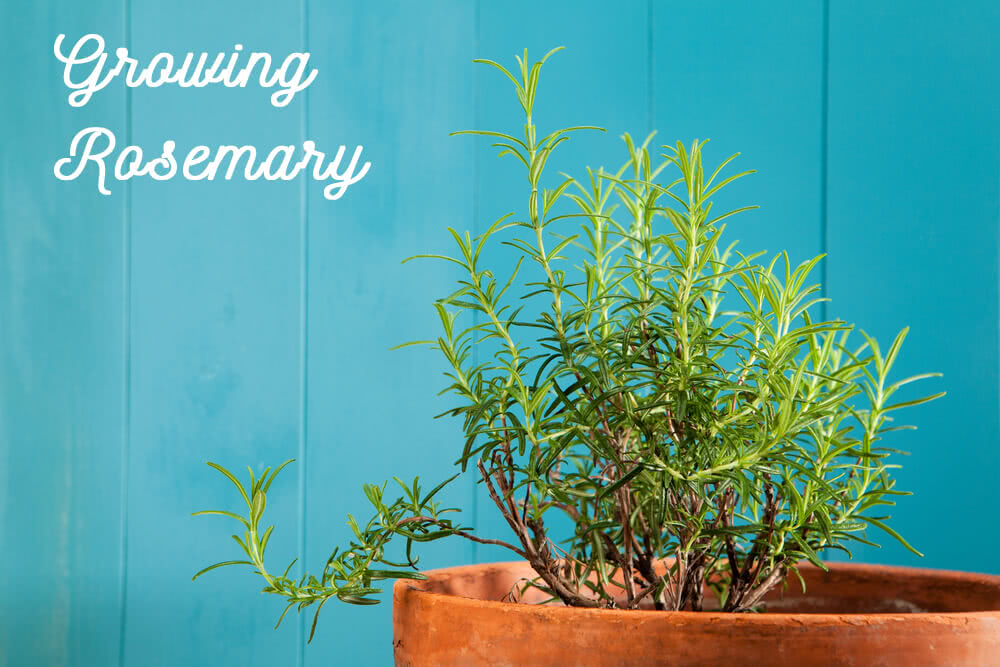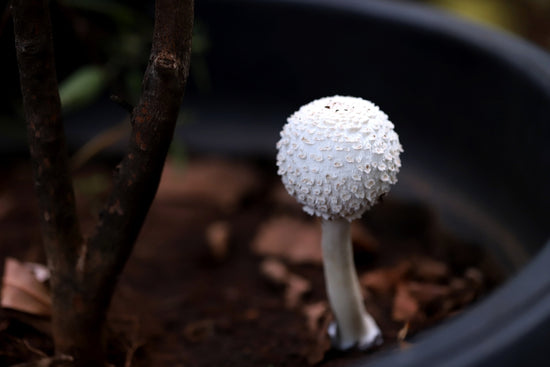
As per the lore of Greek mythology, the Greek goddess Aphrodite was covered in rosemary when she rose from the sea. As per another legend, the rosemary flower turned from white to blue when Virgin Mary spread her blue cloak over a white-blossomed rosemary bush while she was resting. The shrub since then came to be known as the "Rose of Mary".
Rosemary has been used in culinary since 500 B.C, or earlier. As a medicinal herb, it is famed for strengthening the brain and boosting memory. The herb also helps in improving digestion and circulation. In culinary sciences, rosemary is used in soups, salads, and stews and curries. It is also used extensively with roasts and meat and poultry.
Rosemary Plant Care
Rosemary plant care is easy and it is one of the hardiest herbs you can grow in your kitchen garden. To grow rosemary plant in India, give it a well-drained and sandy soil and at least six to eight hours of direct sunlight. The rosemary plant thrives in a warm and humid environment and does not do well in extremely cold climates. While growing rosemary plants at home, maintain the growing medium on the dry side. Terra cotta pots are a great choice for growing rosemary as they help in keeping the soil dry.The rosemary plant appreciates a soil pH between 6 and 7 and you can further improve the soil quality by adding a few inches of enriched and aged compost like Gardenia Cow Manure or vermi-compost into the topsoil and mixing it well. Use a well-draining potting mix such as Pot-o-Mix for a rich and well-draining mix of several soil components. Allow the soil to dry out between watering cycles and when watering, water the plant thoroughly till water comes out of the drainage hole. Take care to pinch and prune your plants regularly for a bushier growth.
Rosemary Sunlight Requirement:
This hardy herb plant is hassle free and does not require much care and maintenance and grows very easily once planted. The Rosemary plant has very basic requirements for a healthy growth, it just needs 6-8 hours of full or dappled sunlight. If you want to grow your Rosemary plant indoors, ensure that the plant gets 6-8 hours of light in a bright spot.Watering Rosemary Plant:
For growing rosemary plant at home, the most important factor is watering the plant right. It is a fairly drought resistant plant that requires very little water and prefers being on the drier side. Use a well-draining potting mix and water only when the entire mix is dry and when watering, water the plant thoroughly. Too much watering can cause root rot and kill your plant and also give way to infections. Ensure that you keep the plant out of direct rainfall in the monsoon season.Potting Mixture for Rosemary Plant:
Since the Rosemary plant prefers being on the drier side, when growing rosemary at home in pots, use a well-draining potting mix. Gardenia Pot-o-mix is a good blend of cocopeat, leaf mould, charcoal chips, compost, bio-enzyme and much more and is very well draining.Select the pot-size as per the size of the plant, too big a pot means extra soil and extra moisture that can lead to root rot. Terracotta pots work better as they help keep the potting mix dry.
Trimming and pruning Rosemary:
Rosemary is an herb and its leaves are the harvest, so pruning become all the more important. Pruning regularly means more branching and more leaves. Pruning is also important for a bushier growth. While pruning rosemary, keep in mind to not prune away more than one-third of the plant and make cuts just above a leaf joint. You can either use the rosemary directly or dry it by tying it up in bundles and hanging it upside down in a cool dry place. You can store well-dried rosemary sprigs for a long time to be used in soups and stews.Rosemary as an Ornamental Plant:
Rosemary not only has use in culinary and medicinal sciences, but it has also been grown in gardens as an ornamental plant for hedging, shrubbery, or topiary shapes for a long time now. Given their low-maintenance and fast growing nature coupled with their beautiful fragrance, the rosemary plant has been loved for decades.Growing Rosemary from Seed and Propagation:
Rosemary can be grown both by seed sowing and propagation. To grow from seeds, sow it first indoors in seedling trays and then transplant it to a bigger pot when the seedling is at least 5-6 inches tall. Click here to Buy Rosemary seeds online.Rosemary plants are usually propagated by stem cuttings. For propagating through stem cutting, take approximately 2 inches (5 cm) long cuttings and pluck away the leaves on the bottom two-thirds of the stem cutting. Plant the cuttings in a well-draining and lose potting mixture and keep the soil moist but not soggy till the cutting roots. Once the roots have developed and plants have established themselves, put it in an area with full to partial sun and watch it grow.
Troubleshooting and Rosemary plant problems:
While the rosemary plant is easy to grow, it is susceptible to some plant problems. Some of them are whiteflies, spider mites, scales, and mealybugs, it is also prone to powdery mildew and root rot. A solution for most of these problems is ensuring that the plant gets full sun and well-drained growing medium. Let the soil dry put in between watering cycles and keep the plant well-ventilated.If you see any infestation, clean the plant under water stream and spray with neem oil. For heavily infested plants, consider pruning away the infected parts and spray with neem oil to avoid spreading. Give it good fertilisation for quicker growth.
How to harvest and store rosemary plants:

Uses:


FAQs
-
What is the best way to grow rosemary in India?
Rosemary is one of the easiest herbs to grow. It is a hardy herb that only requires full sunlight, good drainage, and air circulation to help it thrive. Sow your rosemary in sunny areas that get at least 6-8 hours of sun sunlight in a loose well-draining soil mix. The rosemary plant does not need fertilisation.
-
How can I grow Rosemary at home?
You can grow rosemary at home either through cuttings or through seeds. To grow through cuttings, take at least a 5 inch cutting and remove the lower most leave, retaining only the top couple of leaves. Place the cuttings in water and plant it in a small container with well-draining soil mix when the roots appear. Place it in a well lit area and keep the soil moist till the plant gets established.
-
Is rosemary easy to grow?
Rosemary (Rosmarinus officinalis) is one of the easiest to grow herb, making it a good choice for home or kitchen garden.
-
Does rosemary keep insects away?
The strong fragrance of rosemary helps keep some bugs away. It keeps mosquitoes, other flying pests, and moths away, making it a great addition to home gardens.
-
Is rosemary an outdoor or indoor plant?
Rosemary can be grown both indoors and outdoors, provided it gets at least 6-7 hours of sunlight. Although when inside, it requires more care, to keep the plant dry.










